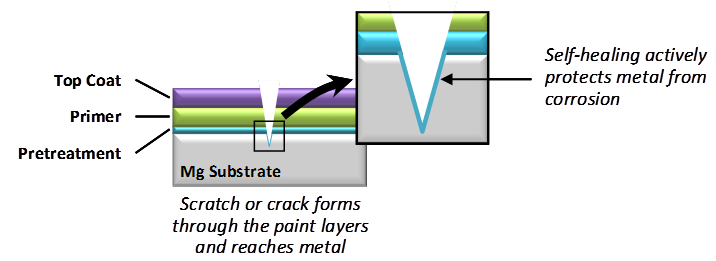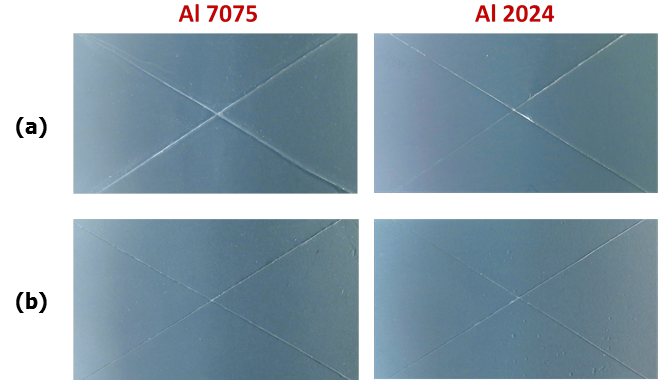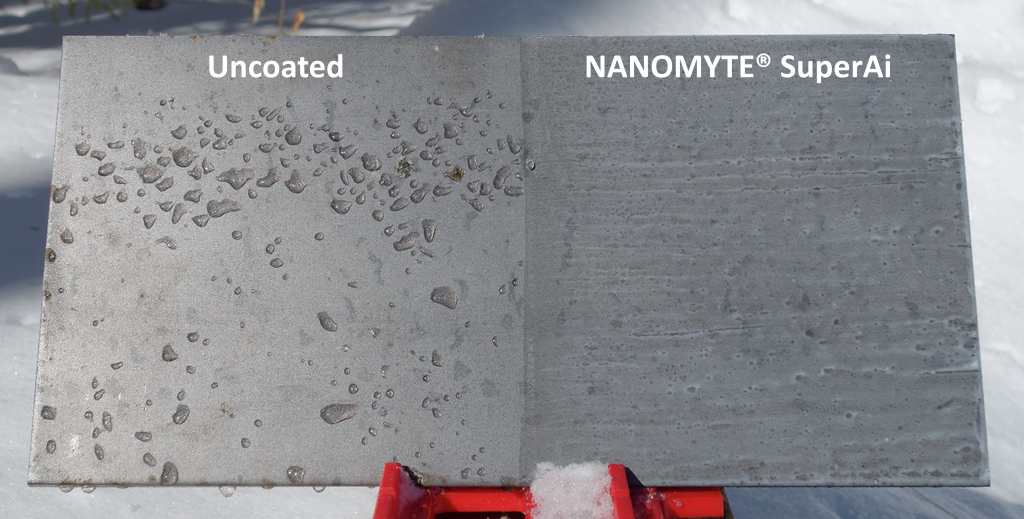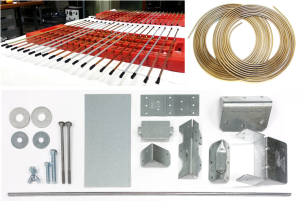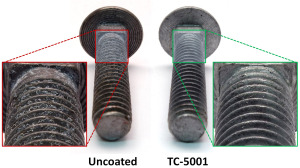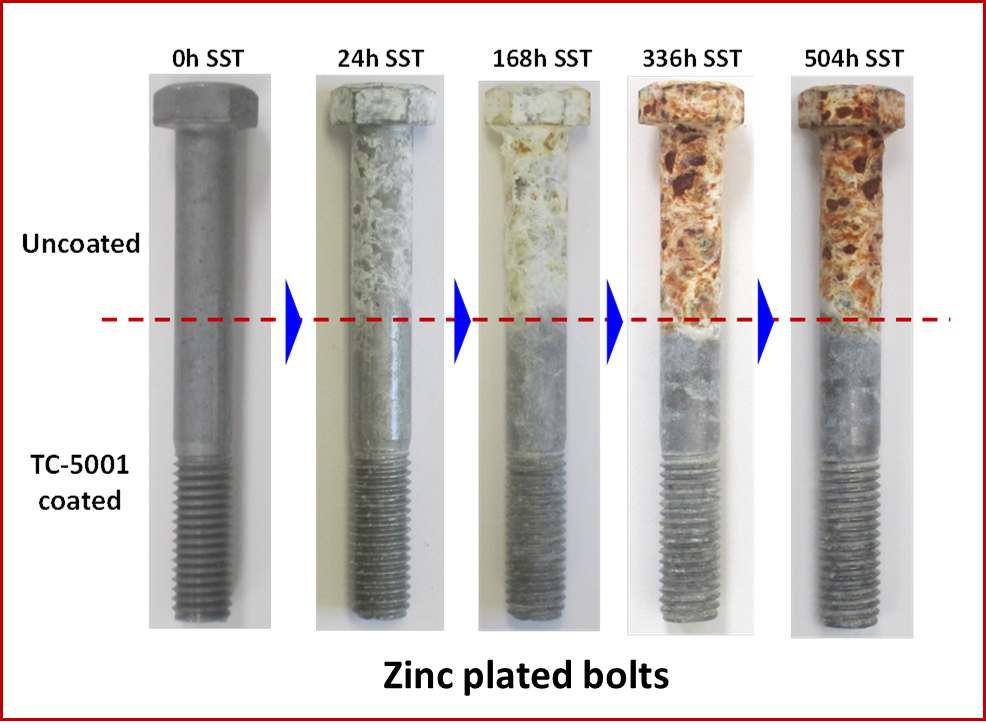NEI Coating Product Update
NANOMYTE® TC-4001-UVP Offers Protection Against Damage by UV-C Radiation Used to Disinfect Coronavirus
May 6, 2020
Somerset, NJ (USA) – NEI Corporation announced today that its newly developed NANOMYTE® TC-4001-UVP product has been shown to offer protection against damage from short-wavelength ultraviolet radiation. Ultraviolet radiation in the 100nm – 280nm wavelength range, also referred to as UV-C, is increasingly being considered as a means for disinfecting surfaces that large numbers of people are likely to come in contact with, such as parts of transit systems, theme parks, cinema theaters, public restrooms, airports, and other areas of high traffic. The COVID-19 virus has made frequent cleaning of surfaces a top priority for maintenance managers of high traffic areas. However, UV radiation causes significant damage to painted surfaces by creating free radicals that then cause polymer degradation. The NANOMYTE® coating offers protection for surfaces exposed to UV-C radiation.
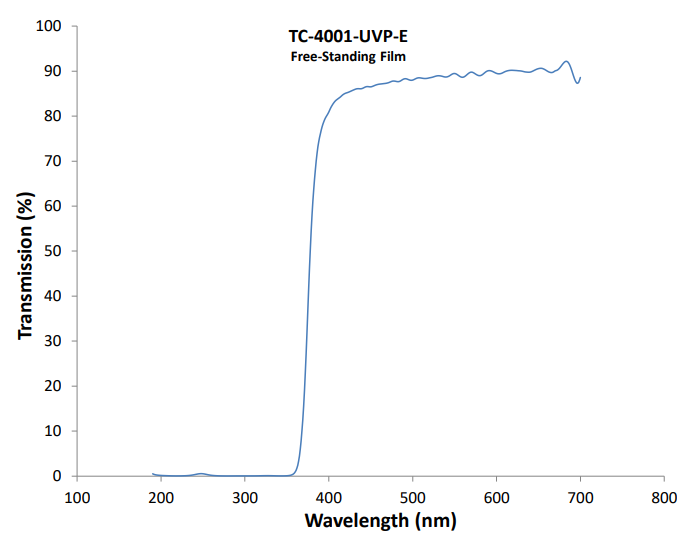
NANOMYTE® TC-4001-UVP Spectroscopic Measurements
NANOMYTE® TC-4001-UVP shows remarkable ability to block UV-C, as evidenced by spectroscopic measurements shown in the adjacent figure. All radiation below 350nm is blocked completely by a film that is only 1/5 mil (5 microns) thick. The transparent coating is a single component formulation designed to protect metals and other surfaces from degrading, preserving their structural integrity and appearance. The hard, dense, and smooth coating is a composite consisting of organic and inorganic phases. It resists scratching and chipping and adheres strongly to bare, pretreated, or painted metal surfaces. A variety of other surfaces may be coated as well, such as plastics and composites. The coating is easily applied by immersion, spraying or brushing, in thicknesses ranging from microns to mils, and is available in glossy or matte finishes.
NEI’s extensive line of functional coatings, which includes NANOMYTE® TC-4001-UVP, is already in commercial use in many industrial, aerospace, consumer goods, wireless communication, and other sectors.
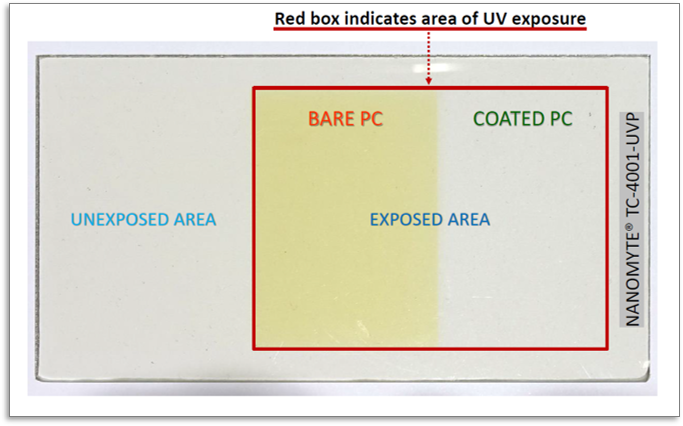
1000 Hours Constant UV Exposure: Polycarbonate in QUV Chamber with UVA 340 Lamps @ 0.9 W/m2
The company’s approach has been to be open and receptive to new applications brought to it by its customers. A typical interaction begins by applying the coating on the customer’s parts for evaluation. Parts are either coated at NEI’s applications laboratory or the customer procures a sample quantity of liquid coating for in-house application. The implementation process then moves through pilot scale tests and eventual qualification. NEI’s engineers support the development and qualification efforts of its customers every step of the way, including drawing up technical specifications and engaging with third party coating applicators, if necessary.
Additional Information: NANOMYTE® TC-4001-UVP Technical Data Sheet (TDS) | Safety Data Sheet (SDS)
View / Download Press Release (pdf) ↓
About NEI Corporation:
NEI is an application-driven company that utilizes materials science & chemistry to develop and produce Advanced Materials. NEI offers an array of Functional Coatings for metal and polymer surfaces. The coatings have tailored functionalities, such as Easy-to-Clean, Anti-Ice, Self-Healing, Corrosion resistant, Anti-Fog, and Abrasion Resistant.
For more information, give us a call or email us.
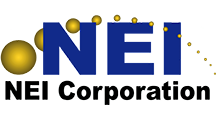
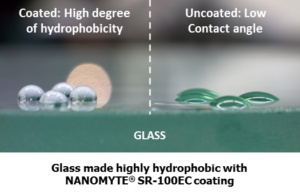 The recently allowed patent application describes durable hydrophobic coating compositions that are highly desirable for numerous applications, as they impart easy-to-clean and stain-resisting properties to surfaces. For aesthetic reasons, there is also a need for a thin, transparent, easy-to-clean coating that does not add excess weight and does not change the appearance of the substrate to be coated. The patented compositions are comprised of functionalized perfluoropolyethers (PFPEs), which are known for their non-stick and lubricating properties. It has been a major technical challenge to incorporate PFPEs into a stable formulation that can lead to a coating with sufficient adhesion to various substrates. The patent claims transparent and homogeneous compositions that overcome the stability and adhesion issues. The compositions result in a micron-thick, durable hydrophobic coating that cannot easily be removed by abrasion, harsh cleaners, or chemicals. The patent is the basis for NEI’s hydrophobic coating products,
The recently allowed patent application describes durable hydrophobic coating compositions that are highly desirable for numerous applications, as they impart easy-to-clean and stain-resisting properties to surfaces. For aesthetic reasons, there is also a need for a thin, transparent, easy-to-clean coating that does not add excess weight and does not change the appearance of the substrate to be coated. The patented compositions are comprised of functionalized perfluoropolyethers (PFPEs), which are known for their non-stick and lubricating properties. It has been a major technical challenge to incorporate PFPEs into a stable formulation that can lead to a coating with sufficient adhesion to various substrates. The patent claims transparent and homogeneous compositions that overcome the stability and adhesion issues. The compositions result in a micron-thick, durable hydrophobic coating that cannot easily be removed by abrasion, harsh cleaners, or chemicals. The patent is the basis for NEI’s hydrophobic coating products, 
